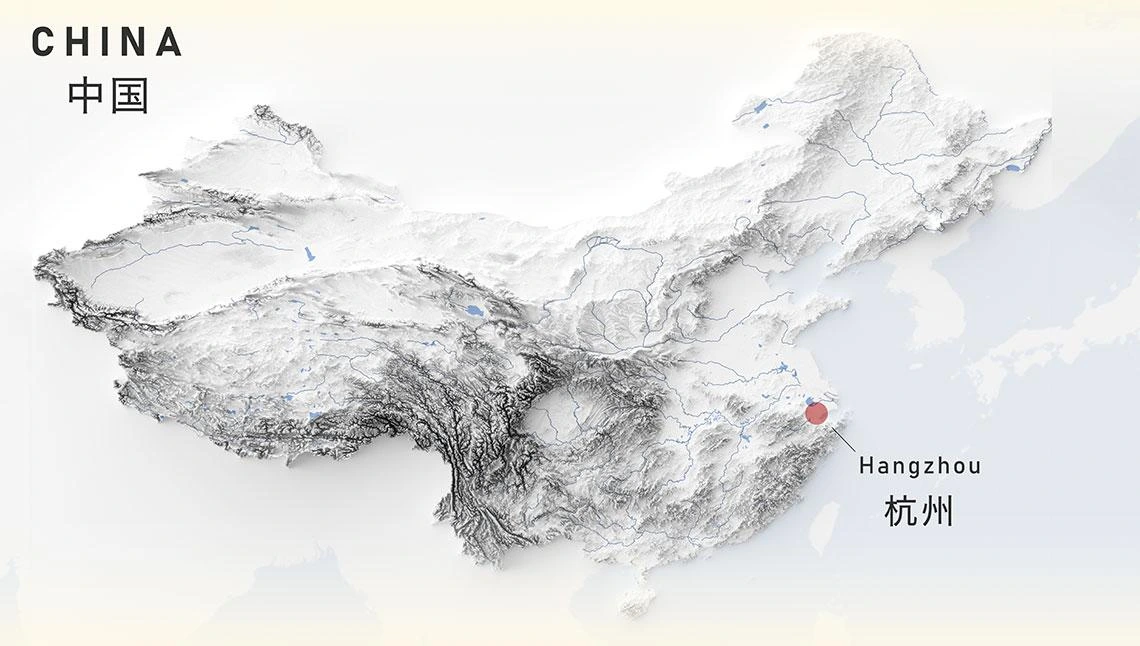
This spring, University of Arizona Master of Science in Urban Planning student Glenn Ingram, recent Master of Landscape Architecture graduate Mattea Wallace and Associate Professor Philip Stoker, working with UArizona East Asian Studies Professor Jiang Wu, created the “Regional Religious Systems in Hangzhou China” story map using advanced geographical information systems (GIS).
This fall, Ingram condensed the interactive story map into a poster that took first place in the Pacific Neighborhood Consortium 2022 Annual Conference Poster Competition. Ingram received the award after his in-person presentation at the international conference, which was held September 16-18 in Tucson.
The students assisted Wu and Stoker in creating the story map as part of Wu’s Regional Religious Systems (RRS) project, a project of the Center for Buddhist Studies in the UArizona College of Humanities. The RRS seeks to “provide a new perspective to the ‘old question’ of regionalism and localism in Chinese history, thus initiating a renewed research program of historical GIS and spatial analysis for achieving a more complete consideration of the role of religion in terms of regional formation,” says Wu.
The team’s goal was to create a “digital atlas” of existing maps, data and literature of Hangzhou, China from 618 AD to 2022 through the use of visualizations based on a longitudinal dataset of a sample of historical Buddhist sites and pilgrimage routes compared to satellite imagery of the landscape today.
The winning poster demonstrates elements of this visualization, including a map of China, historic pilgrimage routes, template locations and how city walls have changed locations over time.
Read more at: https://capla.arizona.edu/studio/regional-religious-systems-hangzhou-ch…

